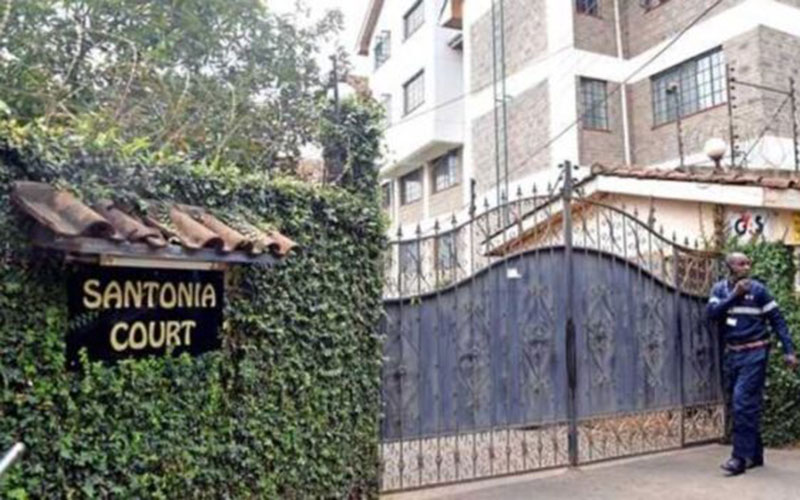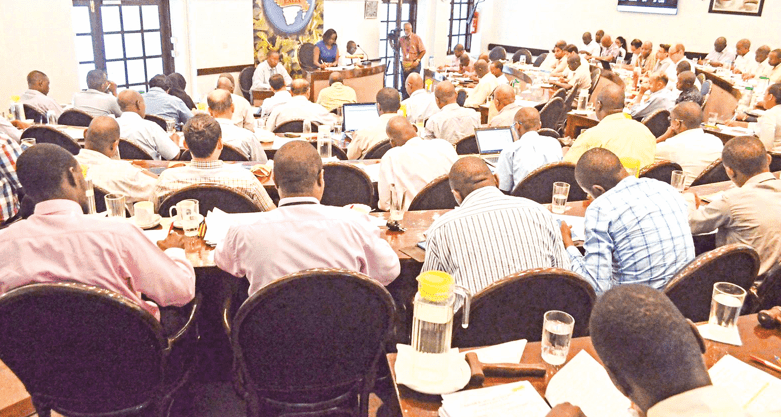Zoning policy births eyesore apartments in posh estates

Residents of various posh estates in Nairobi in the recent past have been crying foul over the mushrooming of tall buildings in the midst of their private homes, which they say is causing environmental problems and security concerns.
The estates, which include Kileleshwa, Kilimani, Lavington, Westlands and Hurlinghum have been trending on social media with images showing how multistorey structures are quickly replacing bungalows with manicured lawns that used to give residents a sense of class.
“Our beloved posh estate now feels like an estate in Eastlands, such as Pipeline estate, which is characterised by crowded apartment buildings,” grumbled a home owner in Kileleshwa who wished to remain anonymous.
Many of the residents told Boma that the high-rise buildings have cheapened the outlook and value of the bungalows/maisonettes while others cry that their right to privacy has been infringed on.
What’s worse, the residents have claimed that the noise from digging and clearing of land for construction and dust has made living conditions difficult for residents forcing tenants to vacate leaving many old homes un.
Nashon Okowa, Association of Managers of Kenya chairman says Africa is experiencing the highest urbanisation and population growth rates in the world.
“The only problem is that our zoning regulations have been lagging in responding to this urbanisation pressure.
We have stuck to the old zoning regulations of the colonial times. As a result, development approvals have been dished depending on the pocket size of a developer.
The resultant effect is the uncoordinated development being witnessed,” he explains.
Otherwise, he notes that new developments in the said leafy surburbs do not come as a surprise.
“The highrise buildings that have lately defined Kilimani and Kileleshwa areas were expected at some point, only that they didn’t expect it to be so sporadic, unplanned and uncoordinated,” he offers.
Environmental degradation
Consequently, the infrastructure system of sewer lines, storm water drainages, roads, water pipes, have remained the same despite this many developments.
Abnormal traffics, water rationing and sewer burst, he says have become a norm not to mention environmental degradation.
“We must, without delay, develop a city master plan that will guide developments going forward.
It is estimated that about 6.5 billion people will be living in cities by 2050. Nairobi, will be at the threshold of these urban migrations and if things don’t change in our planning development, we shall have a lot of problems, such as floods and sewer bursts,” he continues.
Over the past five years, KiliWatch, a residential association, has publicly and actively worked on development controls, planning and safety in Kilimani.
Wanjiku Kanyiha, a lawyer and the executive director of Kilimani Project Foundation believes that the change in the zoning policy in 2017 is what has resulted in the many highrise buildings in the area.
“Kilimani area was zoned for residential development and is now a mixed-use property area with both commercial and residential developments taking over the place,” she explains.
She also attributes this rise to the lack of proper government oversight on the types of developments coming up, which has led to the proliferation of high rise buildings, going upto 15 floors, and densification of the neighbourhood, without proportional development to support the new infrastructure.
“Kilimani’s proximity to the commercial business district and other social amenities makes it attractive to the middle class and upwardly mobile citizens who can access the Central Business District (CBD) fairly quickly.
The neighbourhood also has amenities, such as shopping malls, schools, hospitals and other social facilities within a fairly short radius.
This convenience makes these neighbourhoods popular among young professionals and those with young families,” she continues.
Weak enforcement of building bylaws on noise and environmental pollution guidelines has left the residents in Kilimani area to feel like the quality of their homes, safety of their neighbourhoods and profitability of their businesses as steadily deteriorating.
Additionally, residential and commercial construction in the capital city of the nation is irregularly taking place without adequate or effective public participation as required by the Constitution and national law.
“Development approvals are being secured without due regard to environmental and building standards or without following procedures required by oversight authorities.
The lack of eyes on the ground by authorities has led to at least 10 deaths of construction workers in the last few months,” explains Wanjiku
Not so bad afterall
President of the Architectural Association of Kenya, Wilson Mugambi says that the increase in multistorey developments points to the rising demand for housing.
“It also shows that there is need for planned densification in urban areas as more and more people are settling in our major cities.
I don’t think it’s something to worry about since it shows a distinct growth in the middle class, which should translate to a better economy and better circulation of capital,” he observes.
Mugambi adds that such structures are as a result of a growing middle class.
Also, the demand for housing close to key amenities, such as schools, hospitals, commercial areas and major transport lines leads to such mushrooming.
Another major reason for such growth is increased investment by local and foreign developers who are keen on tapping into the real estate market in the country.
“People tend to believe that such structures deny people access to open spaces and that they come to destroy the serenity of a locality.
Ideally, well designed and people friendly developments do come up and all that it takes is having the right mix of professionals to maximise on space while ensuring spatial harmony,” he says.
Mugambi recommends the revision and enforcement of zoning policies and keen assessment of development applications by the counties, which should be done by relevant professionals.
This enables the counties to have the capacity to interrogate any proposals.“Residents can take action if a development contravenes the zoning policy of their locality.
But there’s need for enforcement at the planning level before anyone breaks ground,” he advices.
Peninah Ndegwa, an urban planner believes that while densification is great, both the government and private developers need to ensure that infrastructural utilities that were used in the past meet the demands of the current population.
“We have to ensure that there is water, electricity and that the area is served by public transportation, because the neighbourhood becomes car centric.
If its mixed-use development, as in residents are able to walk, cycle or use public transportation, that means that it will lessen congestion,” explains Peninah.
Densification is provided for in the 2019 Physical Land Use Planning Act number 13, which allows for the preparation of local physical and land use development plans, which is mostly done by the cities at city level and at county level.
Planners will propose the regions or the zones that maybe allowed to densify presently and convert the land use from a modern city to high density neighborhoods.
“Because the process is highly participatory, the residents and all the stakeholders will be allowed to give ideas of whether they accept it or not and how they would like their area to be upgraded,” she explains.
Owners usually have the challenge of accepting that their neighbourhood is changing and Peninah advices them to be up to date with the proposals at the city level in their region.
“Ensure that you join an association in your locality as it gives you power and a voice through your officials.
You are also able to protect against such uses, because if the neighbourhood rejects it then it won’t happen,” she says in ending.















